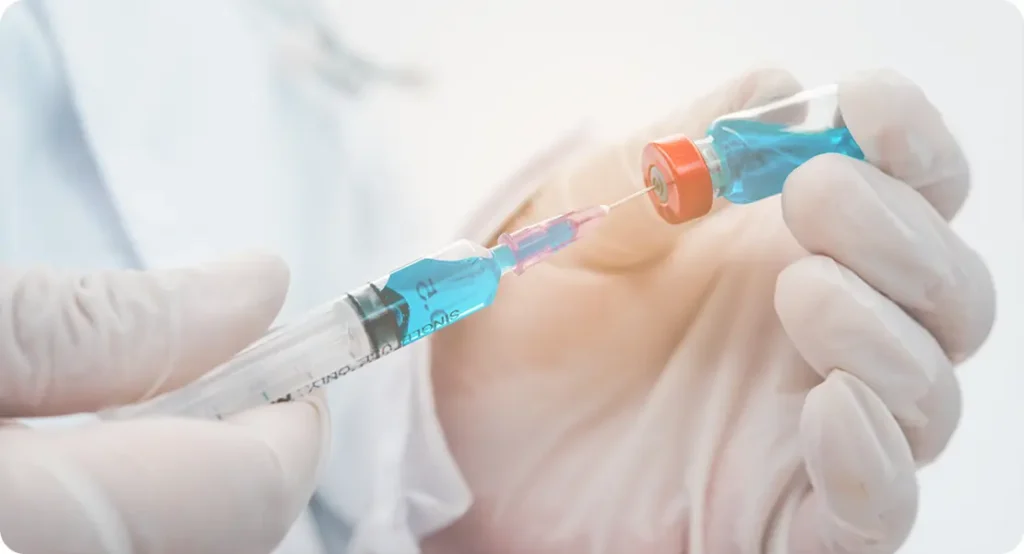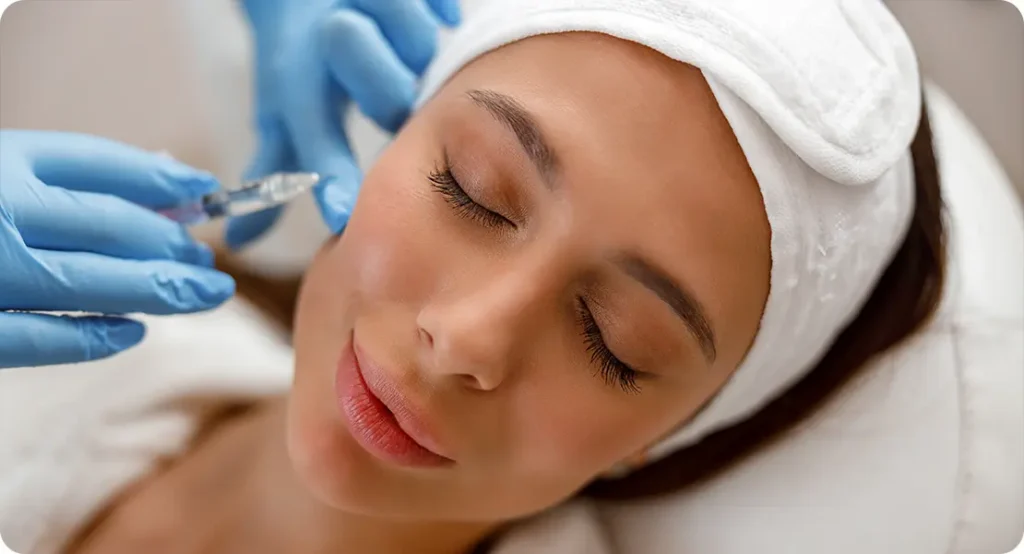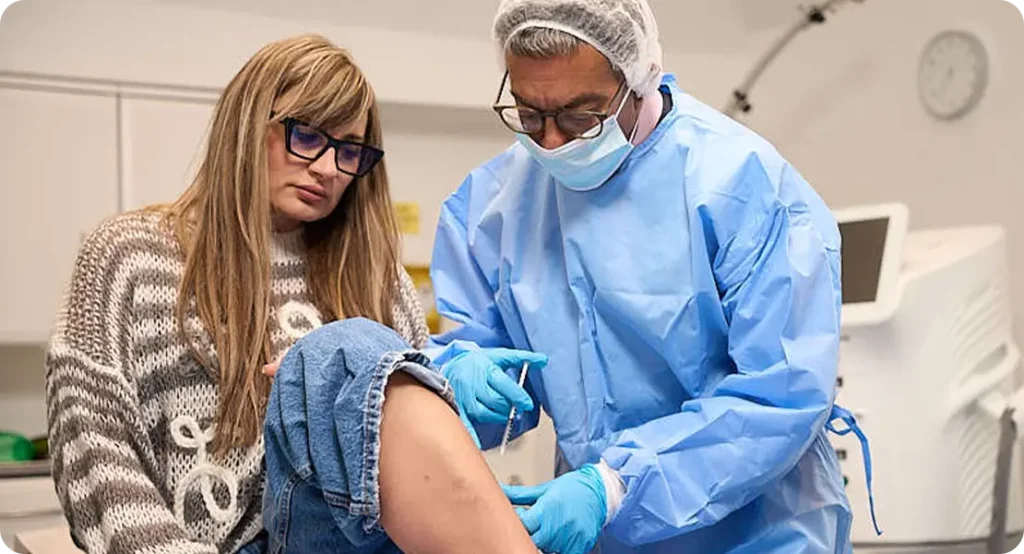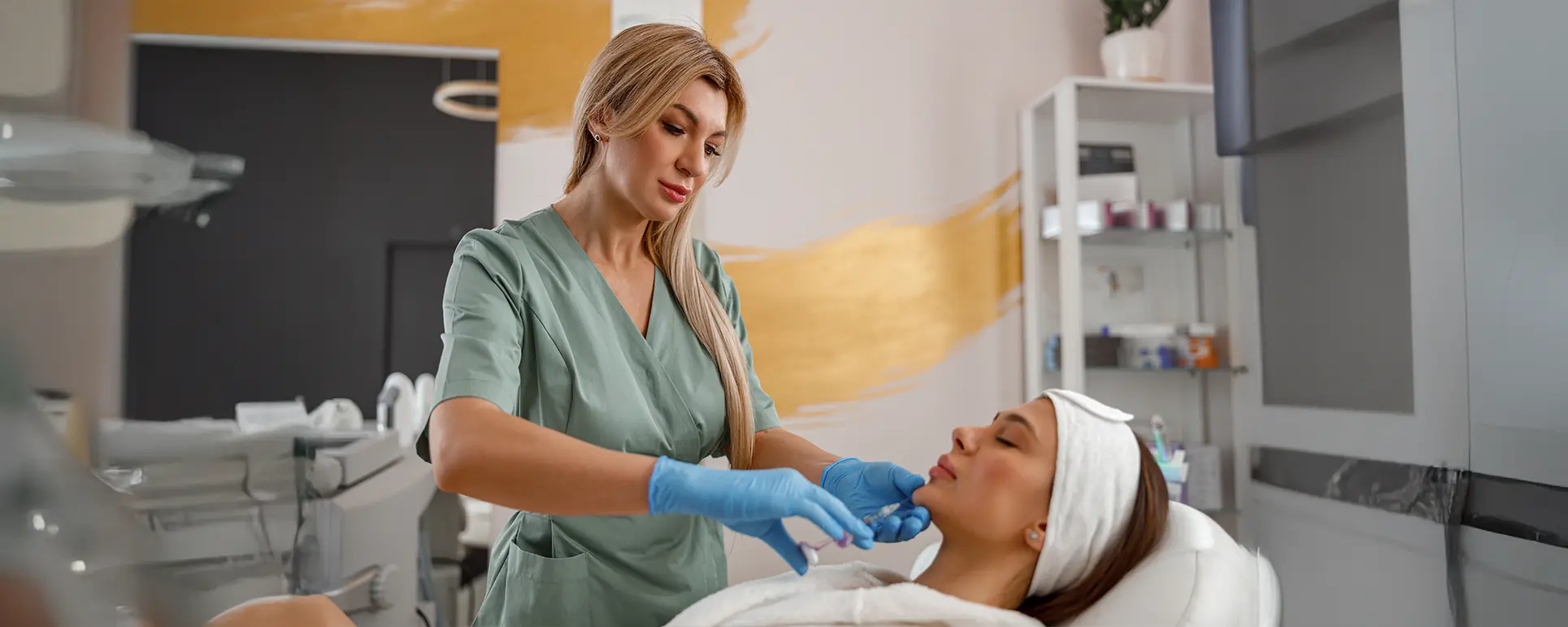Polynucleotide injections are rapidly emerging as a promising game-changer in the evolving world of non-surgical aesthetics and skin rejuvenation. Unlike conventional dermal fillers that primarily focus on restoring volume and contour, these innovative DNA-based biostimulators work at a deeper cellular level. They activate fibroblasts, stimulate natural collagen synthesis, and promote tissue regeneration, leading to improvements in skin elasticity, texture, and overall health. Their remarkable effectiveness in reducing fine lines, minimizing scarring, and enhancing skin hydration has generated considerable interest among dermatologists, medical researchers, and patients seeking less invasive yet long-lasting aesthetic solutions.
This article explores the growing role of polynucleotide-based injectables within the field of aesthetic dermatology. We’ll provide an in-depth comparison with more established treatments like hyaluronic acid (HA) fillers and platelet-rich plasma (PRP) therapies, examining their differences in mechanisms of action, clinical efficacy, safety profiles, and patient satisfaction. Supported by recent clinical studies and emerging research, this scientific overview aims to clarify whether polynucleotide injections truly represent the next frontier in skin rejuvenation and regenerative medicine. For those curious about the future of non-surgical cosmetic treatments, this article offers a comprehensive look at a technology that could redefine how we approach youthful, healthy skin.
1. Understanding Polynucleotide Injections
Polynucleotide injections are composed of purified DNA fragments, typically derived from salmon sperm due to their high biocompatibility. When injected into the dermis, these polynucleotides act as biostimulants, encouraging natural tissue repair. They also support fibroblast proliferation and the synthesis of essential skin proteins like collagen and elastin.
Unlike dermal fillers that physically occupy space under the skin, polynucleotides initiate a biological process. Over time, this leads to enhanced hydration, improved elasticity, and healthier skin structure. The results are subtle and natural, which appeals to patients seeking rejuvenation without dramatic changes.
This regenerative approach makes them ideal for treating delicate areas such as under the eyes, the neck, or acne-scarred skin. The treatment suits individuals looking for long-term improvements in skin quality rather than immediate volumising effects.
2. The Science Behind Fibroblast Stimulation
Fibroblasts are key to maintaining firm, resilient skin. Polynucleotide injections work by stimulating these cells to increase their production of collagen and other extracellular matrix components. This foundational change supports long-term skin regeneration.
Scientific studies confirm that treated skin exhibits improved cellular density and elasticity over time. The stimulation also improves vascularisation, which contributes to better oxygen and nutrient delivery to skin tissues. These biological effects collectively help reduce signs of ageing and improve skin tone.
By enhancing fibroblast activity, polynucleotide treatments offer a more sustainable form of anti-ageing intervention. The goal isn’t just to restore lost volume, but to reprogram the skin’s natural repair mechanisms.
3. Comparison with Hyaluronic Acid (HA) Fillers

Hyaluronic acid fillers are widely used to replace lost facial volume and smoothen wrinkles. They offer immediate, visible results but do not impact skin biology. In contrast, polynucleotides work more gradually by boosting skin function and regeneration.
HA fillers are excellent for sculpting facial features, but they don’t stimulate long-term improvements in skin health. Polynucleotide treatments, on the other hand, improve hydration, elasticity, and overall skin quality from within. This difference makes them suitable for different patient goals.
In many cases, a combination of both treatments may be used. While HA fillers shape and contour, polynucleotides enhance the underlying skin texture, leading to a more harmonious outcome.
4. Comparison with Platelet-Rich Plasma (PRP)
Platelet-rich plasma (PRP) is derived from the patient’s own blood and contains growth factors that aid in tissue repair. Like polynucleotides, PRP is used to rejuvenate skin and treat scars. However, its efficacy can vary based on the individual’s platelet concentration and preparation method.
Polynucleotide injections offer more consistency and are easier to standardise than PRP. Clinical trials suggest that they may provide more reliable improvements in skin texture and tone. Additionally, polynucleotides are less invasive as they don’t require blood extraction.
PRP remains a valuable tool in aesthetics, especially when combined with microneedling. But polynucleotides are becoming a preferred option for patients who want predictable and scientifically supported outcomes.
5. Treating Fine Lines and Wrinkles
Fine lines develop due to collagen loss and repeated facial movements. Polynucleotide treatments tackle this issue at its root by encouraging collagen renewal and boosting skin elasticity. Over time, wrinkles soften and skin texture becomes smoother.
Patients often notice a reduction in crow’s feet, forehead lines, and perioral wrinkles after a few sessions. The gradual effect ensures that results appear natural rather than overly corrected. This makes it an appealing option for patients wary of more dramatic procedures.
Clinical data supports these claims, showing measurable improvements in wrinkle depth and skin firmness. Polynucleotides provide a non-invasive alternative to Botox or filler-based approaches for those seeking a natural refresh.
7. Addressing Photoaged Skin
Sun exposure damages skin cells and depletes collagen, leading to premature ageing. Polynucleotide injections help counter this damage by enhancing skin repair at a cellular level. They improve elasticity, reduce pigmentation, and restore hydration.
Patients with sun-damaged skin often report noticeable brightening and firming after treatment. This makes polynucleotides an attractive option for rejuvenating areas like the décolletage, hands, and face. The natural, progressive results align with modern preferences for subtle improvements.
By targeting the oxidative stress and inflammation caused by UV exposure, polynucleotides support long-term recovery. This sets them apart from quick-fix treatments that only offer temporary results.
8. Improving Skin Hydration
Hydrated skin appears plumper, softer, and more youthful. Polynucleotides enhance skin moisture by attracting and retaining water within the dermal layers. They also stimulate hyaluronic acid production naturally through fibroblast activation.
Unlike topical moisturisers that sit on the surface, injectable polynucleotides work from the inside out. This deeper hydration leads to longer-lasting improvements in skin texture and glow. Patients with dry or mature skin benefit significantly from this treatment.
Clinical evaluations have shown improved transepidermal water retention and elasticity after a series of injections. This adds to the growing body of evidence supporting their role in comprehensive skin rejuvenation.
9. Enhancing Skin Elasticity

Loss of elasticity leads to sagging and less defined facial contours. Polynucleotide treatments help reverse this by encouraging the formation of elastin and collagen fibres. These proteins give skin its bounce and firmness.
With repeated sessions, patients observe firmer jawlines, smoother necks, and better-defined cheeks. The improvement is subtle but continuous, providing a refreshed appearance without dramatic changes. This is ideal for patients seeking gradual enhancement.
Furthermore, the elasticity gains from polynucleotide treatments create a healthier and more robust skin base, which can significantly support and prolong the effects of complementary cosmetic procedures. Whether combined with dermal fillers, laser treatments, or thread lifts, improved skin elasticity helps these interventions achieve longer lasting and more harmonious results. Ultimately, this holistic approach contributes to maintaining youthful skin and balanced facial contours over the long term.
10. Longevity and Maintenance of Results
Unlike traditional fillers that fade within 6–12 months, polynucleotide treatments offer longer-lasting improvements. This is due to the regeneration they stimulate at a cellular level. Results can be maintained with touch-ups every 6–12 months depending on the patient’s age and lifestyle.
Patients appreciate the sustained benefits without needing constant re-injections. The treatment encourages ongoing skin improvement even after sessions have ended. This makes it both cost-effective and convenient over time.
For optimal maintenance, practitioners often recommend three initial sessions spaced a few weeks apart, followed by periodic boosters. This routine helps preserve elasticity, hydration, and youthful texture.
11. Safe Use in Delicate Areas
Polynucleotide injections are especially beneficial in sensitive or delicate regions like the under-eye area, neck, and décolletage. These zones are often difficult to treat with conventional fillers due to risks of lumpiness or poor integration.
The fine consistency and biocompatibility of polynucleotides allow for smooth distribution and effective stimulation without volumising side effects. As a result, patients experience firming and brightening in areas that typically respond poorly to other treatments.
Dermatologists often choose polynucleotides for patients concerned with crepey skin or fine lines in these regions. The minimal risk of complications enhances their appeal as a safe and gentle option.
12. Post-Procedure Recovery and Downtime
Another advantage of polynucleotide injections is their minimal recovery period. Most patients resume normal activities within 24 to 48 hours. Mild swelling or redness at the injection sites usually subsides quickly.
Unlike some laser or resurfacing treatments, polynucleotides do not cause peeling or extensive inflammation. This makes them ideal for individuals with busy schedules or events planned shortly after treatment.
To ensure best results, practitioners advise avoiding vigorous exercise, sun exposure, and alcohol for a day or two. This helps reduce the risk of bruising and supports optimal integration of the product.
13. Compatibility with Other Aesthetic Treatments
Polynucleotides can be safely combined with various other aesthetic treatments, including HA fillers, microneedling, radiofrequency, and laser therapies. Their regenerative action enhances the effects of these procedures.
When used together, treatments can address both structural and biological aspects of ageing. For instance, fillers restore volume while polynucleotides boost hydration and collagen. This synergy offers more comprehensive results.
Combination therapy is gaining popularity in modern aesthetic practices. It allows for tailored treatment plans that address multiple concerns within a single protocol.
14. Tailoring Treatments to Skin Types
Polynucleotide injections are suitable for a wide range of skin types, including sensitive and reactive skin. Their anti-inflammatory properties make them well tolerated, even by individuals prone to redness or irritation.
Practitioners can adjust dosage, injection depth, and frequency based on the patient’s skin condition and goals. This adaptability ensures a personalised experience with consistent results.
Patients with melanin-rich skin tones can also benefit, as polynucleotides do not pose a high risk of hyperpigmentation unlike some aggressive resurfacing methods.
15. Patient Satisfaction and Retention
High patient satisfaction is one of the standout features of polynucleotide treatments. Individuals often report a renewed sense of confidence and improved skin quality after just a few sessions.
Because the effects are gradual and natural-looking, patients are more likely to return for maintenance treatments. This fosters strong practitioner-patient relationships and long-term care plans.
The non-invasive nature and safety profile also contribute to positive word-of-mouth referrals, making these treatments popular in both clinical and social circles.
16. Anti-Inflammatory Properties
Beyond aesthetics, polynucleotide injections offer substantial anti-inflammatory benefits, which contribute to their growing appeal in dermatology. These agents help reduce oxidative stress and calm irritation within the skin, providing relief for patients with chronic inflammation.
They work by modulating inflammatory cytokines, promoting a balanced environment conducive to tissue repair. This anti-inflammatory action supports improved skin tone and resilience, particularly in patients prone to sensitivity or rosacea.
As inflammation is a key driver of accelerated skin ageing, controlling it effectively can lead to healthier, more youthful-looking skin. This property gives polynucleotides an edge over some traditional cosmetic treatments.
17. Use in Male Aesthetic Treatments
Historically, aesthetic procedures were more common among women, but an increasing number of men are seeking subtle, rejuvenating solutions. Polynucleotides meet this need by offering natural-looking results without bulk or puffiness.
They are particularly useful for improving texture and tone in male patients who may be concerned about maintaining a masculine facial structure. Subtle enhancements help achieve a refreshed, well-rested appearance without obvious changes.
This gender-neutral adaptability makes polynucleotides a popular choice in clinics catering to a broad demographic. Their regenerative approach resonates well with male preferences for gradual transformation.
18. Sustainability and Ethical Sourcing
An often-overlooked benefit of polynucleotides is their origin from ethically sourced fish DNA, primarily salmon. These sources are sustainable, and their purification process ensures high safety and compatibility with human tissue.
Clinics are increasingly prioritising environmentally responsible treatments, and polynucleotides align with this shift. They contain no animal proteins that can trigger allergic responses, making them more widely suitable for diverse patient populations.
As ethical sourcing becomes a key factor in patient choices, polynucleotide injectables present a compelling combination of performance and responsibility.
19. Psychological Impact of Subtle Enhancements
While aesthetic outcomes are often measured in skin texture and tone, their psychological impact is equally important. Patients receiving polynucleotide injections frequently report increased confidence and satisfaction.
The natural pace of improvement helps individuals adjust gradually to their new appearance, reducing the risk of body dysmorphia or treatment regret. This aligns with mental wellness trends that emphasise subtlety and self-acceptance.
Practitioners note that patients are less likely to seek repeated, excessive interventions when they’re pleased with the progressive changes brought on by polynucleotides.
20. Future Potential and Clinical Research

Ongoing research into polynucleotides continues to unlock new potential applications in regenerative medicine. Studies are exploring their role in scar revision, wound healing, and even hair restoration.
Their versatility makes them a promising base for combination therapies and innovative delivery methods. New formulations may soon allow for even deeper penetration and enhanced skin regeneration.
As clinical trials expand, we can expect polynucleotide technology to evolve into a staple not just in aesthetics, but in broader therapeutic dermatology fields.
Final Thoughts: A Regenerative Leap in Aesthetic Dermatology
Polynucleotide injections represent a paradigm shift in how we approach skin rejuvenation. Instead of masking imperfections, these treatments revitalise skin from within restoring elasticity, hydration, and radiance naturally and progressively. Their gentle yet powerful action has proven effective across concerns like acne scars, fine lines, sun damage, and dullness, making them a versatile addition to any aesthetic practice.
As patient demand grows for sustainable, non-invasive, and biologically intelligent solutions, polynucleotide treatments stand out for their safety profile and consistent results. Whether used alone or in combination with other therapies, they address skin concerns at their root.
You can get in touch with our clinic if you would like to learn more about polynucleotides treatment and how it may benefit your skin goals. Our expert team is here to guide you toward long-lasting, natural-looking rejuvenation.
References:
- Kim, J.Y., Kim, D.H., & Kim, H.J., 2022. Polynucleotide-based injections for skin rejuvenation: A literature review of current evidence and applications. Journal of Cosmetic Dermatology, 21(1), pp.65–72. Available at: https://onlinelibrary.wiley.com/doi/10.1111/jocd.14479
- Cervelli, V., Palla, L., Pascali, M., Angelis, B.D., & Curcio, B.C., 2010. Autologous platelet-rich plasma mixed with purified fat graft in aesthetic plastic surgery. Aesthetic Plastic Surgery, 34(5), pp. 603–608. Available at: https://link.springer.com/article/10.1007/s00266-009-9447-4
- Jeong, K.H., Lee, J.H., & Choi, M., 2023. A comparative study of polynucleotides and hyaluronic acid in dermal aesthetics. Dermatologic Therapy, 36(2), e15741. Available at: https://onlinelibrary.wiley.com/doi/abs/10.1111/dth.15741
- Shin, M.K., Lee, J.H., Lee, S.J. et al., 2020. Role of polynucleotides in wound healing and skin regeneration. Archives of Plastic Surgery, 47(3), pp. 264–271. Available at: https://www.ncbi.nlm.nih.gov/pmc/articles/PMC7391126/
- Park, T.H., & Rah, D.K., 2012. Clinical efficacy of polynucleotides on photodamaged skin: A pilot study. Dermatologic Surgery, 38(11), pp.1817–1824. Available at: https://doi.org/10.1111/j.1524-4725.2012.02531.x
